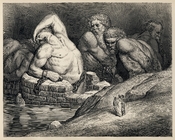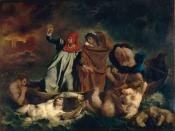Moving past the aesthetic images which Dante has brought to attention lies the truth of the medieval period in Europe. The crudeness which is exhibited refers to the actual place and time, where paganism was the only release from a suffocating Christian society. Pagan images used in Dante's Inferno have been interpreted differently through the 14th to the 20th centuries by Giotto and Dali.
The term "pagan" was a Christian word, deriving from the Latin "paganus" and implying anyone who wasn't "a soldier in Christ's army". The term was not applied to Jewish people, who at least worshiped a god of their own. After the rise of Muhammed in the 7th century, it was laid on the Muslims for a time, despite their unswerving monotheism.
Paganism was long thought to be a form of organized faith but in researching, I found, in what I feel are the most credible references, that paganism is not a religion.
More simply, it is Christians of the Medieval times who did not accept the modern faith. Pagans, by this interpretation, were those who held religion to be a private matter in which a variety of creeds and cults who could exist side by side. One's own private devotion to a particular god may have stemmed from an hour of need when a person believes that the diety was merciful, so he may feel indebted, or a person may have been raised to certain beliefs. The rest of the people may show no enthusiasm of any kind.
Yet another misconception of pagans is the they spent all of their time worshiping idols, chugging wine and copulating in the streets; this is not true. They were often estute intellectuals capable of engaging in learned exchanges with or verbal attacks on Christian bishops. In their zeal, the...


